Newsletter

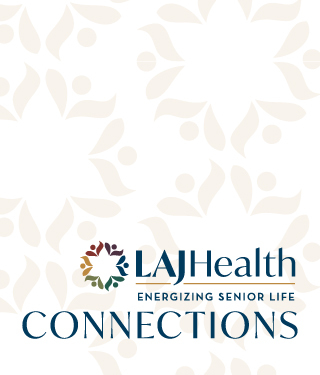
Our Newsletter
Connections
May
1
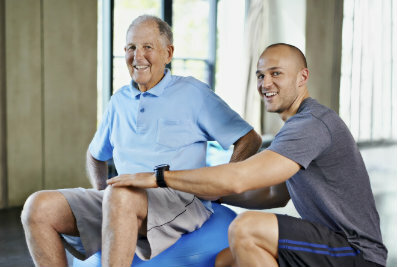
How Can We Help? Part 3
The Jewish Home’s innovative Connections to Care (C2C) program is an exciting approach to meeting the growing needs of seniors in our community and beyond. C2C is a simple, fast, and easy way for seniors and their loved ones to access all of the programs and services offered by the Los Angeles Jewish Home. A call to the C2C toll-free hotline at (855) 227-3745 will customize a care plan just for you.
With C2C, the top priority is asking, “How can we help?” One toll-free phone call connects seniors directly to Jewish Home expert staff members. They begin by listening, and then open the door to the Home’s full continuum of in-your-home, community health, and residential programs. C2C also enables the Home to serve as a resource for calls from outside our service area, providing assistance through resources and referrals to help address individual situations.
In recent issues of Jewish Home e-Connections, we highlighted some of the Home’s many programs - Brandman Centers for Senior Care, a Program of All-inclusive Care for the Elderly (PACE), Jewish Home Care Services, Care Transitions, the Jewish Home Center for Palliative Medicine, Skirball Hospice, and geriatric care - using sample questions we have received. In this installment, we will take a look at the Home’s short-term rehabilitative care, also known as transitional care, and short-term geriatric psychiatry care.
“My husband is scheduled for hip surgery and will need therapy and care after the hospital. Is there help available?”
—Yes. Call Connections to Care to access short-term rehabilitative care for seniors. Designed to help seniors successfully recover from an illness, injury, medical procedure, or acute hospital stay, the Transitional Care Unit (TCU) provides short-term skilled nursing care and a guided transition to return home. Patients in the TCU receive treatment from physicians and geriatric specialists in physical, occupational, and speech therapy.
“My grandmother frequently has huge mood swings – manic one day, very depressed the next. How can I help?”
—Start by calling the Connections to Care toll-free hotline. We will connect you with experts in the state-of-the-art Auerbach Geriatric Psychiatry Unit for short-term geriatric psychiatric care. The Unit admits individuals who are experiencing stressful mental or emotional challenges that require intensive, short-term acute hospital psychiatric care. Most commonly treated diagnoses are:
DepressionBipolar disordersPost-traumatic stress disorder (PTSD)SchizophreniaDeliriumAlzheimer’s diseaseOther dementias with behavioral disturbances
In addition to the Jewish Home’s many community-based and in-your-home services, the Home offers long-term in-residence programs, including independent living, residential care, assisted living, Alzheimer’s and dementia care, and skilled nursing care.
For more information about the programs and services offered through the Jewish Home’s Connections to Care, please contact us at (855) 227-3745 or visit our website at www.lajh.org.
May
1
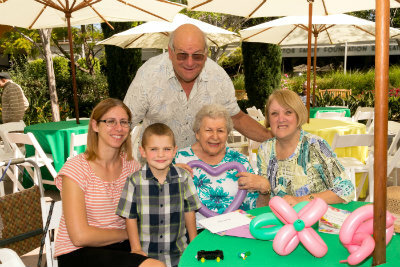
Celebrating our Special Mothers
This Sunday, May 8th, more than 1,000 friends and family members will attend the 22nd Annual World’s Largest Mother’s Day Celebration.
This heartwarming celebration of motherhood will honor the Home’s senior mothers, grandmothers, great-grandmothers, and even great-great-grandmothers who have given us so much. “Mother’s Day serves as a reminder of all the amazing ways the special women in our lives have nurtured, cared and loved us,” The Home’s CEO-President, Molly Forrest remarked. “On Sunday, we will recognize with gratitude the women who have always been there for us.”
“Mother’s Day is traditionally one of the Home’s most joyous, and well-attended, events of the year.” Board of Directors Chair, David L. Swartz observes. “This celebration is a direct result of the commitment and hard work of our Mother’s Day chair, Judy Friedman Rudzki, the generosity of our corporate and private sponsors, and the dedication of caring friends and supporters, whose effort makes this an exceptional day for our residents and Jewish Home family.”
Jewish Home seniors and their guests will enjoy a delicious brunch and a dynamic performance by the Skye Michaels Orchestra. Colorful clowns will juggle, mime, and bring balloon animals to life. After a day of fun, guests will be given a commemorative program and a framed photograph keepsake to cherish for years to come.
Tickets for adults (age 12 and older) are $25.00 each and children’s tickets (ages 5-11) are $12.00 each. There is no charge for Jewish Home residents and children under age 5.
For more information about the 22nd Annual World’s Largest Mother’s Day Celebration, please contact Denise Horowitz at [email protected] or (818) 774-3324.
Apr
12
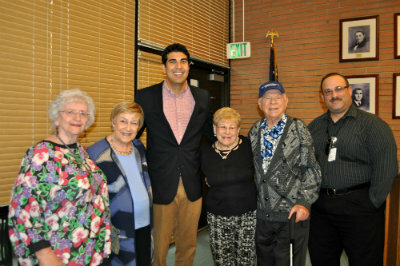
Assemblymember Matt Debabneh Speaks at Eisenberg Village
On the morning of Friday, April 8th, Assemblymember Matt Debabneh made his way to the Eisenberg Village’s Zuckerman Boardroom to speak to the Jewish Home’s seniors and staff about Assembly Bill 1319, also known as the Medically Needy Program Extension.
Eisenberg Village administrator Doug Tucker welcomed the crowd and gave a brief explanation of the bill. “Currently, the Medically Needy Only (MNO) program provides senior recipients with just $20 per month as a personal spending allowance. This $20 must cover over the counter drugs, clothing, shampoo and a variety of personal items such as hearing aid batteries and denture repairs. For the 12,000 individuals across the state that qualify for this welfare, $20 is simply not enough.”
Doug continued, “Last year, the Assemblymember Matt Debabneh partnered with the Home to help preserve the dignity of our MNO population and increase the amount of money these needy seniors receive. Matt did an incredible job pushing AB 1319 through the House of Representatives and on to the Senate. Unfortunately, the Bill was suspended once it reached the Senate’s budget committee last year. However, our champion, Matt Debabneh is here to discuss his plans to re-introduce the bill this year.”
Assemblymember Matt Debabneh then took the stage and pledged his commitment to the seniors of California. “Seniors are the backbone of our community. They are the reason we are able to live in such an incredible community. The jobs you’ve worked, the taxes you’ve payed, the families you’ve raised.. And now it’s time for us to do the same for you. The $20 MNO recipients are given each month is not enough. All of our seniors should be able to live in dignity. I’m going to keep fighting for you.”
After all was said and done, seniors and staff members enjoyed delicious refreshments and had the opportunity to speak with the Assemblymember.
Stay tuned to the Los Angeles Jewish Home blog to follow AB 1319’s journey through the House and Senate.
Apr
6

World Allergy Week 2016
World Allergy Week is an annual initiative of the World Allergy Organization (WAO). This year, World Allergy Week falls on April 4th-April 10th. During this week, WAO partners with its member societies to raise awareness of allergic disease and related disorders. WAO also advocates for the provision of training and resources in the diagnosis, management, and prevention of these diseases and asthma, which are rising in prevalence around the world.
While allergies affect people of all ages, they can have a large impact on the lives and health of seniors. Allergy symptoms, such as a congested nose, an irritated throat, and a dry mouth can be extremely dangerous to a senior who has pre-existing cardiovascular or lung problems. Pollens can also aggravate existing medical conditions such as heart disease and COPD. That is why allergies in the elderly should be treated as rapidly and aggressively as possible
Seniors with pollen allergy need to be particularly careful using over the counter or prescription medications for their symptoms. The anti-histamines that help minimize the effects of allergies are not recommended for a lot of seniors. That is because they can interact with other medications and increase blood pressure. In addition, the sedating quality of anti-histamines increase a senior’s risk of falling, and could cause a dangerous condition where the person cannot urinate. Other side effects include confusion, drowsiness, dry mouth and eyes, and dizziness. Rather than prescribing antihistamines for the seniors suffering from seasonal allergies, a doctor will often prescribe a nasal steroid or some form of topical medication.
The following are some simple tips for you to consider:
Use the air conditioner. Keeping the windows closed helps to prevent pollens and molds from entering the house.Don’t hang clothing or linens outside to dry. Instead, use the clothes dryer or hang them indoors to dry.Keep an eye on pollen levels and plan outings for days when pollen counts are projected to be the lowest. There are several free services that will also alert you when pollen counts reach high levels. They include The Weather Channel, The American Academy of Allergy Asthma and Immunology, and Pollen.com.Wear sunglasses when you are outside. That can prevent pollen and other seasonal irritants from getting in to your eyes. A hat also helps prevent it from getting in to your hair and working its way on to your hands and clothing.Wash your hands after being outdoors. And make sure to shower as soon as you come in from working or spending any significant amount of time outside. Throw the clothes you were wearing in to the laundry. That can help prevent pollen from being spread around your house.Many nutritionists believe that foods that help fight inflammation can help relieve some of the symptoms of allergies. Those include apples, walnuts, flax seed, ginger, leafy green vegetables and foods rich in vitamin C. However, as mentioned previously some people are allergic to these foods.
It is important to realize seniors often have multiple chronic health problems, and it can be hard for a doctor to separate a potential allergy from their ongoing diseases. A caregiver or family member who suspects that their elderly loved one may have allergies should bring their concerns to their loved one's doctor, and suggest to the doctor allergy testing or treatment.
Dr. Noah MarcoJewish Home Chief Medical Officer
Apr
1
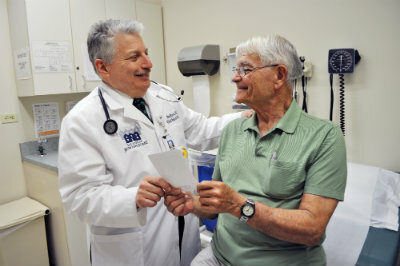
How Can We Help? Part 2
The Jewish Home’s innovative Connections to Care (C2C) program is an exciting approach to meeting the growing needs of seniors in our community and beyond. C2C is a simple, fast, and easy way for seniors and their loved ones to access all of the programs and services offered by the Los Angeles Jewish Home. A call to the C2C toll-free hotline at (855) 227-3745 will customize a care plan just for you.
With C2C, the top priority is asking, “How can we help?” One toll-free phone call connects seniors directly to Jewish Home expert staff members. They begin by listening, and then open the door to the Home’s full continuum of in-your-home, community health, and residential programs. C2C also enables the Home to serve as a resource for calls from outside our service area, providing assistance through resources and referrals to help address individual situations.
In our March issue of Jewish Home e-Connections, we highlighted three of the Home’s many programs - Brandman Centers for Senior Care, a Program of All-inclusive Care for the Elderly (PACE), Jewish Home Care Services, and Care Transitions. In this issue, we will take a look at the Jewish Home Center for Palliative Medicine, Skirball Hospice, and geriatric care, using sample questions we have received.
“My wife has chronic pain due to MS. How can I help?”
—By calling Connections to Care you can learn about compassionate palliative care. The Jewish Home Center for Palliative Medicine offers comprehensive pain and symptom management for adults with serious, chronic, or life-limiting illness. The program addresses patients’ medical, psychological, social, and spiritual needs. Through Connections to Care, an individualized care plan will address your needs.
“My father just received a terminal diagnosis of less than six months to live. What help can you provide?”
—Skirball Hospice, a program of the Jewish Home, provides compassionate end-of-life care for adults with a life-limiting illness in the Greater Los Angeles area. Skirball Hospice treats patients in their home or in a care facility as needed, including nights and weekends. At no-cost through Medicare or Medi-Cal, hospice care includes:
Pain managementMedical equipmentSuppliesEmotional and spiritual supportPersonal care
“My best friend could really benefit from a geriatric specialist. How can I help her find one?”
—One call to Connections to Care at (855) 227-3745 will connect you and your friend with primary and specialty medical care.
In the May issue of Jewish Home e-Connections, we will focus on another important service offered by the Jewish Home through Connections to Care – short-term rehabilitative care.
For more information about Connections to Care, please contact us at (855) 227-3745 or visit our website at www.lajh.org.
Apr
1
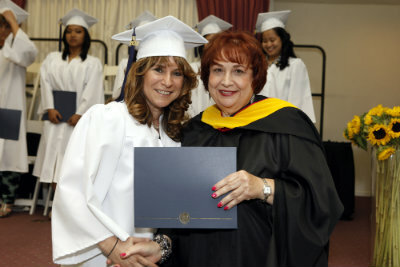
A Passion for Learning and a Yearning to Care
The Jewish Home’s Annenberg School of Nursing (ASN) continues to provide an exceptional learning opportunity for those who are interested in helping others as a nurse assistant, home health aide, or vocational nurse. Since its inaugural Class of 2008, over 100 students have completed the 13-month, full-time Vocational Nurse (VN) program and begun fulfilling careers. As ASN prepares for the graduation of the Class of 2016 in July, and to welcome the Class of 2017 in September, Jewish Home e-Connections will present some of our graduates’ success stories. We hope they will inspire readers who may be considering a career in the field of nursing to take that step to change their lives, and the lives of others.
ASN alumni Susan Genova, Class of 2012, always had a passion for learning and was drawn to science and biology. Her lifelong goal was to study nursing; but her path was sidetracked a bit after she graduated from Emory University with an Associate’s Degree in Applied Science. Susan would go on to work on Wall Street as a Bank Stock Analyst’s Assistant doing research and as a Webmaster. “Most importantly,” she says, “I raised two children and now have two grandchildren. Becoming a nurse was always on my mind, but I couldn’t figure out my way back to school.”
Susan’s mother died unexpectedly in 2009. “For two years after her death, I could hear her voice telling me to go back to school.” The opportunity to attend ASN came along, and Susan took it. “I was nervous about going back to school at 52. My husband was very supportive and encouraged me to take the step forward. Marie Cordeiro, ASN’s Director, helped immensely. “Through her constant confidence in me I was able to draw on strength I did not know I had.” Susan studied diligently and committed to making school her top priority, which resulted in her graduating among the top in her class.
After passing the NCLEX-PN® exam in 2012, Susan worked as a LVN at the Home’s Joyce Eisenberg-Keefer Medical Center. “I was trying to figure out what was next for me. I started teaching Nursing Assistant classes at The Red Cross. Through this I became certified as a DSD – Director of Staff Development – and I knew that was the next right choice for me.” Shortly after completing her certification, Susan applied for the DSD position at the Home’s Eisenberg Village. She has been working in that capacity since August 2015.
“At the Annenberg School of Nursing, Susan took her studies seriously,” says ASN director Marie Cordeiro. “She was considerate of her classmates and truly cared about their success. During clinical rotations, Susan was eager to learn and showed great compassion with patients. Her successful career is a reflection of her commitment to nursing and helping others to thrive.”
Upon reflecting at her time at ASN, Susan shares what made the experience so beneficial in her nursing career. “The small class size encourages team work and camaraderie. ASN offers a variety of clinical sites not available to most VN programs. This exposure teaches you to be quick on your feet and quick in your mind. And when a position at the Jewish Home is available and an ASN graduate has the appropriate skills, you are able to gain experience in your field after graduation, which is critical at the beginning of your nursing career.” Congratulations to Susan Genova on discovering her path to a successful career in nursing. Your dedication to learning, team work, and providing excellence in care is greatly appreciated by the Jewish Home residents and staff, and the Annenberg School of Nursing is proud of you.
For information about the Jewish Home’s Annenberg School of Nursing, please contact Cindy Thomas, admissions coordinator, at [email protected] or (818) 757-4431, or visit ASN’s website at www.asn.edu.
Apr
1
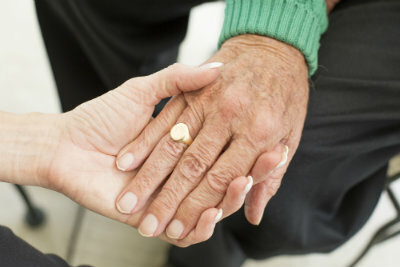
Volunteers Provide Comfort and Companionship at Skirball Hospice
The mission of the Los Angeles Jewish Home’s Skirball Hospice is to provide high-quality, compassionate care to patients enabling them to approach the end of their lives with dignity and in comfort among people they know and love.
The hospice staff works diligently in order to ensure the patient’s medical, physical, psychological, and spiritual needs are met. Volunteers become an integral part of the hospice care team, especially when patients have little or no family or community support. They provide patients and their families with comfort, compassion, companionship, and a sense of well-being in the final stages of life’s journey.
During the average visit with a patient, a volunteer might be asked to:
Provide companionship and listen to a patient’s concernsBe comforting and offer family members emotional supportEngage in the patient’s favorite activities and hobbiesEncourage the patient to talk about his/her lifeCommunicate with other members of the hospice teamRun errands for the patient and his/her familyTake beloved family pets for a walkRun errands for the patient and his/her familyAssist a patient in organizing papers or writing memoirs
Because this work is unusual and can be emotionally demanding, searching for the right person to fill this position can be a challenging process. Skirball Hospice volunteer coordinator Lee Rothman, M.Ed., M.A. explains, “When I look for volunteers, I search for someone who is patient, respectful, empathetic, non-judgmental, and comfortable in their own skin. A hospice volunteer must be comfortable being around people who they know will not get better.”
Many volunteers, like Peter Giannini, have experienced the loss of a loved one and feel compelled to share their knowledge with others facing the same struggles. “There’s a lot of emotion tied up with losing a loved one. When my mother passed a few years ago, I went through it all. Thanks to that experience, I am better able to come into these delicate situations and give my patients and their families the support they need to get through this difficult time.”
Volunteering at Skirball Hospice is a wonderful opportunity for people who only have a few hours a week to give– our volunteers can do so much during that time to brighten up someone’s day. Whether you are having a discussion, reading, listening to music, or enjoying a meal together, the simple act of being present and in each other’s company can be deeply satisfying for you and your patient.
Being a hospice volunteer is an intellectually and emotionally fulfilling activity. Lee observes, “Skirball Hospice volunteers benefit from experiencing the different aspects of caring for the terminally ill. They gain a deeper understanding of death, dying, grief, loss, and end of life decision-making. These volunteers have the opportunity to make a tremendous difference in someone’s life. Not only do they get to know their patients and their families, they are able to learn a lot about themselves. Hospice philosophy views death as a natural part of life. Volunteering with hospice patients can lead to a greater appreciation for one’s own life.”
For many, volunteering at hospice has been an eye-opening experience. “In my time working with Hospice patients, I’ve been exposed to something not many people have the chance to experience,” Skirball volunteer Bob Moore shares. “I’ve learned a wealth of information – I’m so much more aware about aging and the last stages of life. I’m experiencing a whole new aspect of quality of life and care."
Skirball Hospice volunteer Peter Marcus feels the same way. “Whatever preconceived notions you have about end of life care, shake them off. There is beauty to be found in the extraordinary circumstances where we find ourselves. It’s worthwhile work. It offers a real opportunity to do something useful, and a greater sense of understanding if you’re paying attention.”
With as little as one hour a week, a volunteer can greatly enhance the lives of a Hospice patient and his or her family. If you are interested in becoming a volunteer at the Jewish Home’s Skirball Hospice, visit their volunteer page online for more information or contact Lee Rothman, volunteer coordinator, at [email protected] or (818) 774-3040 extension 355.
Mar
23

Spiritual Renewal in the Digital Age
A sprig of parsley. An egg. It must be Spring. The world around is blooming, summer fruits are around the corner, and the world is modeling for us, indeed, begging us to begin anew. What does that mean for a spiritually minded person? It means pressing the reset button on how we interact with ourselves and each other.
Let’s begin with the self. Do you breathe? I have always appreciated the cliché of “stopping to smell the roses” because of its attention to nature, and because to smell something one needs to inhale deliberately and with intention. Do you sing? I have led singing for decades and something transformative happens to our souls when we sing. To sing, you also need to breathe and to press air out with intention. Breathe and sing to refresh your spirit.
Do you spend time outside? Wherever we live, in this day and age we do not spend time outside unless we make an effort to do so. The Jewish tradition implores us to spend time outside and to notice what we see. Consider Shabbat. Our tradition asks its observers to notice the sunset once a week! Indeed, you know when Shabbat has begun because the sun has set. What other tradition in the world asks its observers to go outside and stargaze once a week? Indeed, you know when Shabbat is over once you can see at least three stars in the sky. Spend time outside; it will renew you.
Do you make enough eye contact with the people you care most about? Moses was famous for speaking with G-d face to face. These days we look at screens more than we look at each other. Each of us yearns to be seen and yet we forget to look. When we turn off the TV, the computer, the cell phone, we honor each other, increase intimacy, and renew our relationships every day.
Happy Spring!!!
Rabbi Karen BenderSkirball Director of Spiritual Life, Grancell Village Rabbi
Jan
6

Assembly Bill 1319 - Medically Needy Program Extension
Our residents and staff are working together to get the word out to the friends and family of the Home by writing letters to our local politicians. Our assisted living residents told their personal stories to help our representatives to understand the gravity of their financial situations. Without this increase in funding to our MNO recipients, they have only $20 to purchase the items they need, such as toothpaste, socks, pay for their phone service, and more.